|
Thanks to Tiffany and her son, Royce, for suggesting the Binturong. It's often called a bearcat, but it is neither a bear nor a cat. It smells like buttered popcorn, but I'm pretty sure it doesn't taste like popcorn. The binturong is a viverrid. What is a viverrid, you ask? Let's find out more. What the heck is a Binturong? The binturong is a mammal that lives in South and Southeast Asia. As I said above, although it is called a bearcat, it is actually in the family Viverridae (the viverrids), which is an ancient group of mammals found only in the eastern hemisphere. The family also includes civets and genets. Binturongs have shaggy, black hair, stiff white whiskers, and a monkey-like prehensile tail. So perhaps instead of calling it a bearcat, people should call it a bearcatmonkey (although it's really none of these). Amazing facts about Binturongs Although binturongs are in the order Carnivora, they eat as much (or more) fruit as they eat other animals. When they do hunt, they sneak around in the rainforest treetops like a cat and catch insects, birds, and rodents. They usually hunt at night, but they often eat fruit during the day, sometimes lounging around on branches as they handle the fruit with their agile hands. Binturongs can also swim and dive well, and on hot days they can even be seen catching fish as they cool down in the water. Binturongs are one of only two carnivore mammals that have a prehensile tale (the other is the kinkajou, which is unrelated and lives in Central and South America). They can use this tail as a fifth hand, to help them climb through the trees and hang on to branches. Binturongs are remarkably docile toward humans, and this has resulted in them being captured from the wild in large numbers, to be sold around the world as pets. This, along with destruction of vast areas of their forest habitat, has caused a significant decrease in the number of wild binturongs in Asia. They are also captured for zoos, and they are hunted for food. Unfortunately, today they are rarely seen in the wild. Okay, what's up with this buttered popcorn smell? It's true, and here's why: In the wild, binturongs are solitary animals—they rarely come face-to-face with each other. And that's the way they like it. To warn others away from their territory, they frequently urinate on the trees. The resulting smell is a signal to other binturongs, "Hey, I live here. Go away!" Oddly enough, they also use this smell during mating season, in which case the meaning changes to, "Hey, I live here. Want to stick around and make babies?" But I still haven't explained the popcorn smell. Scientists have identified 29 chemical compounds in binturong urine. The one compound found in every sample was 2-acetyl-1-pyrroline (let's just call it 2-AP). Remarkably, 2-AP is the exact same chemical that gives cooked popcorn its wonderful scent. But this creates more questions than answers! The 2-AP in popcorn is only produced when the popcorn is heated up and popped. The high temperature is necessary to get that smell. Binturongs are awesome, but they certainly can't produce such high temperatures in their bodies. So, we don't know for sure how they do it, but scientists suggest that the 2-AP might be produced when the binturong urine comes into contact with specific bacteria that live on the animals' skin or fur. Since males have more 2-AP in their urine than females, then it seems logical that leaving their scent on the branches not only tells other binturongs that a binturong is nearby, it even tells them if the nearby binturong is a male or female (precise communication is important, don't you think?). Let's talk about binturong babies for a moment. First, binturongs are one of the few mammal species capable of embryonic diapause. The means the female, once her eggs have been fertilized, can delay the eggs' implantation until environmental conditions are just right. Okay, in my opinion that qualifies as a superpower. The females can mate whenever they find a male, but then they can delay birth until they are ready. Typically, a female will give birth to only two babies, but sometimes there are as many as six. Check out this video of binturong babies. Binturong babies smell like popcorn as much (or more) than the adults. But... the babies also have their own superpower. During the first few months, when the young are most vulnerable, the babies have the ability to squirt out a foul-smelling liquid (like a skunk). As they grow older they become better able to protect themselves, and they soon lose this stinky superpower. Binturongs have an interesting relationship with strangler fig trees. Not surprisingly, Binturongs eat the figs from these trees and then poop them out somewhere. But as it turns out, a strangler fig seed cannot germinate on its own. It has to have the binturong's help. The binturong is one of only two known animals that have the correct digestive enzymes that can break down the tough outer covering of the fig's seeds. So this makes the binturong kind of important to the strangler fig trees. One last tidbit. Ever wonder what a binturong would look like in a formal portrait? Of course you have. Well, ZooPortraits is a fun organization that creates and uses "ironic caricatures" to teach about wildlife and to raise money for conservation. For your viewing pleasure, below is a binturong in a very formal setting (not exactly its natural habitat). So, the binturong deserves a place in the D.A.H.O.F. (Dope Animal Hall of Fame). FUN FACT: The word dope originated in the 1840s, and it referred to a thick liquid (such as a lubricant) used to prepare a surface. In the 1880s, the word began to be used to refer to any illicit drug. Then in about 1905, the word began to refer to news or information (What's the latest dope on the election?). And then much more recently, it became a slang word for cool (Yo, that new shirt is dope!). So, dope is another way to say awesome! Photo Credits:
Binturong #1 - Wikipedia Binturong lounging on limb - Wild Republic Binturong with babies - ZooBorns Baby binturong hanging in tree - ZooBorns Binturong formal portrait - ZooPortraits
0 Comments
Meat from domesticated turkeys has become so ubiquitous in grocery stores and restaurants that people tend to forget about the ancestors of the domestic turkey, the wild turkey. But as one of the largest birds in their native range, wild turkeys are fascinating and well worth a closer look. What the heck is a Wild Turkey? Turkeys are large birds that live mostly in North America (US, Mexico, and Canada). Turkeys are in the order Galliformes, which also includes pheasants, chickens, quail, partridges, grouse, junglefowl, and other similar birds). Turkeys are easily recognized by their featherless heads and loose folds of skin on the head and neck. There are only two species of true wild turkeys, and one of the species has five or six distinctive subspecies. The eastern turkey is the subspecies that lives on our new property: Amazing facts about Wild Turkeys Wild turkeys are omnivorous. They not only feed on seeds, nuts, berries, fruits, and grasses, but they also love gobbling (no pun intended) insects, as well as small frogs, salamanders, lizards, and snakes. Turkeys have a lot of names. Mature males are called toms, gobblers, or longbeards. Mature females are hens. Juvenile males are called jakes, whereas juvenile females are jennies. And the chicks are called poults (this word comes from poultry). Male turkeys have elaborate behaviors for attracting and impressing females. They use a gobble call to attract females. Not only is this call quite different from the call of any other bird, it is also loud! A turkey's gobble can be heard a mile away. Perhaps even more impressive than the gobble is the male turkey's ability to strut. They fan out their tail feathers and puff up all their other feathers to look larger. They also emit two other sounds, spitting and drumming, both of which are subtle and rather difficult to capture on video or audio recordings. But if you turn your volume up, you can hear toms spitting and drumming in this video. Below is a tom strutting, trying to impress a hen. To me, she looks only mildly interested. An adult turkey has between 5,000 and 6,000 feathers! Males have sharp, wicked-looking spurs on their legs, which they use when they fight each other for dominance. Males (and 10 to 20% of females) have a long tassel of specialized hair-like feathers hanging from their lower necks, called a beard. Although no one knows for sure, these beards probably help to impress females (the longer the beard, the older and more virile the tom). Turkeys have weird-looking heads. Above the male's beak is a fleshy protuberance called a snood (yep, it really is called a snood). Again, this structure is used to impress females (studies show that females prefer toms with longer snoods... in turkeys, size really does matter). The loose, fleshy stretch of skin below the chin is the wattle. And the bumpy masses of skin on the neck are caruncles. Like a really ugly mood ring, these bumpy parts turn colors depending on the turkey's mood: they turn red to attract a hen, but they turn blue when the turkey is frightened. The tom below has a particularly impressive snood, wattle, and caruncles. Sexy, huh? There is a commonly-believed myth that the wild turkey almost became the national bird of the United States (the bald eagle has that distinction) when Benjamin Franklin argued for it. Here's the true story: Ben Franklin did write a letter to his daughter in 1784, in which he criticized the bald eagle (because it was chosen for the national seal). He wrote that the bald eagle is a bird of bad moral character and does not get his living honestly... he is too lazy to fish for himself. He went on to say that, compared to the eagle, the turkey is a much more respectable bird, and though a little vain and silly, a bird of courage. So, although Ben obviously liked the turkey, technically he didn't really propose making it the national symbol. Wild turkeys were a favorite food of Native Americans. In fact, the turkey is one of only two domesticated birds native to North America (the other is the Muscovy duck). The domestic turkey originally came from Mexico. Native Americans in central Mexico, sometime between 1000 BC and 100 BC, domesticated the south Mexican wild turkey (the only subspecies that does not live in the U.S.). The Spaniards took this domesticated subspecies back to Europe in the 1500s, and eventually it spread throughout Europe as a farm animal. Ironically, settlers from England brought these domestic turkeys with them to Massachusetts, unaware that a larger, closely-related subspecies already lived in the wilds of Massachusetts. It is believed that all domestic turkey breeds came from the south Mexican wild turkey subspecies. Wild turkeys almost went extinct. When Europeans first arrived, millions of turkeys lived from Canada south into Mexico. But by about 1900, most of them were gone due to overhunting and habitat loss. By the late 1930s, there were only 30,000 left. By the 1940s, only isolated pockets of them existed. Through intensive conservation efforts, these birds gradually rebounded. Now it is estimated that about 7 million live in the U.S. Many people are surprised to learn that turkeys can fly. Actually, they are strong flyers (although only for a relatively short distance... about a quarter mile). Turkeys fly up into trees every evening, where they roost in safety for the night. Not only can turkeys fly, but they can run at up to 25 miles per hour (40 kph)! Hen turkeys lay 10 to 14 eggs. The eggs hatch after at least 28 days. The hen feeds the poults, but only briefly. Within a few days, the poults are running around catching insects on their own. The males play no role at all in raising the young. That doesn't seem fair, does it? One last tidbit of information. There are several other birds around the world that are called turkeys, but those are not closely related to the turkeys of North America. One example is the brush turkey of Australia (also called the bush turkey, scrub turkey, or gweela). When Trish and I explored Queensland, Australia last year, we saw many of these. They are not only common, but they often seem unafraid of humans, sometimes walking by within a few meters. These birds are awesome, too, but although they are in the same order, they are in a different family from the wild turkeys of North America. Here's a brush turkey. So, wild turkeys deserve a place in the N.A.H.O.F. (Neato Animal Hall of Fame). FUN FACT: The word neat originated in the early 1300s, and it meant polished, handsome, trim, and clean. At some point the word became a slang expression for great or wonderful. It was already being used a lot when I was a kid in the 1960s, so it must have started before then. And then around 1968, American teens began using a variation of the word: neato. If you say neato today, people would consider you laughably out of touch (or perhaps fashionably retro). Regardless, neato is another way to say awesome! Photo Credits:
Flowing spring and turkeys in yard - Stan C. Smith Bearded Tom Turkey - National Wild Turkey Federation Tom strutting for hen - Robert Burton/USFWS Tom snood and wattle - Lansing Wild Birds Unlimited Domestic turkeys - All Over Albany Hen turkey with poults - TribLive via Wikimedia Commons Australian brush turkey - Di Donovan via ABC After 27 years at our previous home, Trish and I recently moved to a new property to the south. Although it takes 70 minutes to drive between the two homes, the new place is actually only 34 miles (55 km) south as the crow flies (I'm not sure how many people use the term "as the crow flies," but it means in a straight line). But there are significant changes in the natural habitat in those 34 miles. The new house is in a region called the Ozarks. One animal that is rare at the old house location but is common at the new property is the nine-banded armadillo. This creature fascinates me, so I was considering featuring it as an Awesome Animal. And then today we discovered that an armadillo family had established residence beneath our garden shed. Four young armadillos were wandering around the area feeding on worms, grubs, and other critters. Here's a photo my daughter-in-law took of two of the youngsters. They were about 10 inches (25 cm) long, not including the tail. That's about half the length of adults. What the heck is an Armadillo? Armadillo is a Spanish word meaning little armored one. This of course refers to the bony, protective plates that cover the creature's body. There are about 20 living species of armadillos, all of them native to the Americas. Only one species, the nine-banded armadillo, lives in the United States. The others are found in Central and South America. Amazing facts about Armadillos Armadillos are the only living mammals that have this type of bony armor. In a previous article I featured the pangolin, which is a mammal with large, protective scales, but those scales are attached to the skin and are not actually made of bone. With Armadillos, portions of the armor are bone-like, particularly over the shoulders and hips, as well as several bands that are connected by flexible skin. See the photo below of the skeleton of a nine-banded armadillo. Contrary to popular belief, most armadillos cannot roll into a ball and cover themselves with their shell (pangolins can do this). Only two species, both of them three-banded armadillos, are capable of curling their heads and feet up and contorting their shells into a tight ball that is almost impenetrable to predators. Nine-banded armadillo do not always have nine bands. In fact, they can have 7 to 11 bands. This species typically grows to about 12 pounds (5 kg). Nine-banded armadillos are rapidly moving north and east in the United States! It wasn't until the late 1800s that this creature crossed the Rio Grande from Mexico into the United States. And since then it has been steadily spreading across the continent. When I was growing up in Kansas, I never once saw an armadillo. Now I see them regularly, both in Kansas and in Missouri, and they have been sighted as far north as Nebraska and Iowa. It is tempting to assume that this progression is a result of climate change, but it is probably more due to the fact that there are no natural armadillo predators here, as well as the creatures' rapid reproductive rate (a female can produce up to 56 babies in her lifetime). Although this expansion seems to be a natural phenomenon, many people consider armadillos pests, mainly because nine-banded armadillos like to dig and can be destructive to gardens, and their burrows can destabilize houses and sheds. Historically, people have eaten armadillos, but usually they have been considered "last resort" food animals. During the Great Depression (in the U.S.), armadillos were called "poor man's pork" and "Hoover hog" (because many people blamed President Hoover for the Great Depression). Armadillos are diverse. The 20 or so different species live in diverse habitats, from rainforests, to grasslands, to deserts. The largest is the giant armadillo, an endangered South American species that grows to over 100 pounds (45 kg). See below. The smallest armadillo is perhaps the most bizarre... the pink fairy armadillo. This species is only 5 inches (12.7 cm) long and lives in the deserts of Argentina. This delightful creature is rarely seen and we know very little about its habits. To give you an idea of how elusive they are, Mariella Superina of Argentina’s National Scientific and Technical Research Council has been studying other armadillos in the pink fairy’s habitat for 13 years and has never once seen one in the wild! See photo below. But people occasionally come across these creatures. Check out this video of a pink fairy armadillo digging in the sand. Yet another species is the screaming hairy armadillo, which is native to the Monte Desert in South America. True to its name, this armadillo emits a loud squeal whenever it is threatened. It also has more hair than most of the other species. See photo below. One last fascinating fact. As a rule, the nine-banded armadillo almost always gives birth to four genetically identical quadruplets (which explains why there are exactly four babies living under our shed). In humans, identical twins or triplets make up only 0.2% of the population. In other words, they are quite rare. There are a few other animals that often have identical twins (ferrets, deer, and polar bears, for example), but only the nine-banded armadillo makes a habit of popping out identical quadruplets. So, armadillos deserve a place in the V.A.H.O.F. (Virtuosic Animal Hall of Fame). FUN FACT: The word virtuoso originated in the early 1600s, and it means a person who has special knowledge or skill in a field, particularly someone who excels in musical skill. The adjective version of the word is virtuosic. Not surprisingly, people have expanded the use of virtuosic to describe almost anything that is outstanding. So virtuosic is another way to say awesome! Photo Credits:
Nine-banded armadillo - Rich Anderson on Flickr Young nine-banded armadillo - Traci Smith-Reams Nine-banded armadillo skeleton - Ryan Somma via Wikipedia Three-banded armadillo in a ball - Smithsonian National Zoo Pink Fairy Armadillo in hands - Mariella Superina/Paul Vogt via Wired Screaming hairy armadillo - Smithsonian National Zoo Nine-banded armadillo quadruplets - QuantumBiologist |
Stan's Cogitations
Everyone needs a creative outlet. That's why I write. Archives
July 2024
|

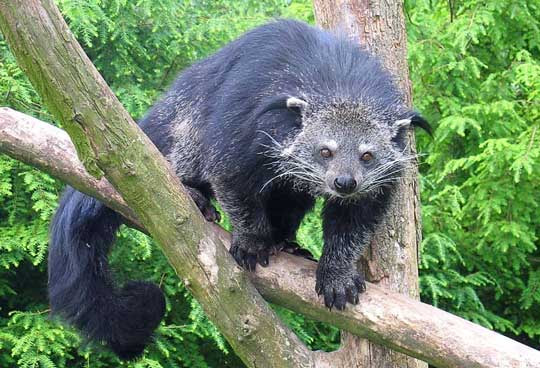


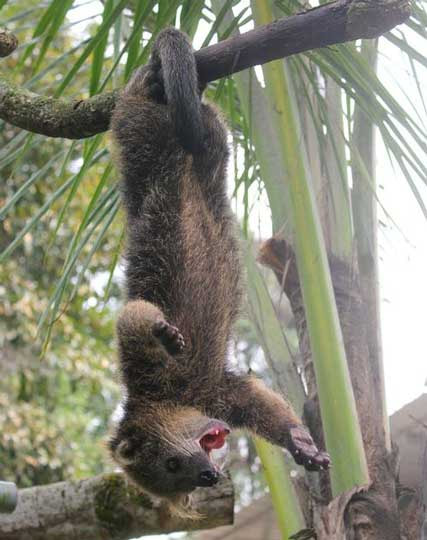



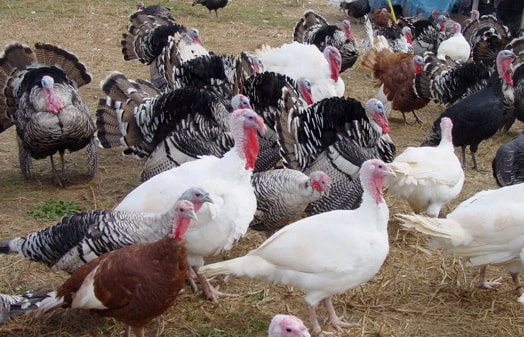

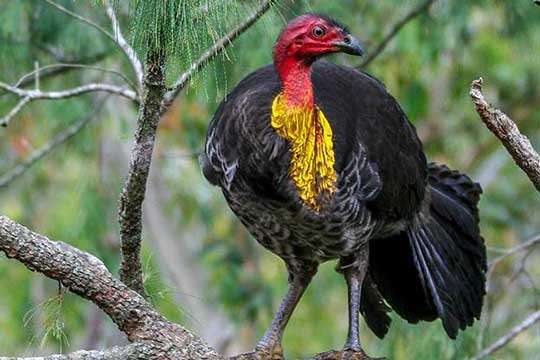


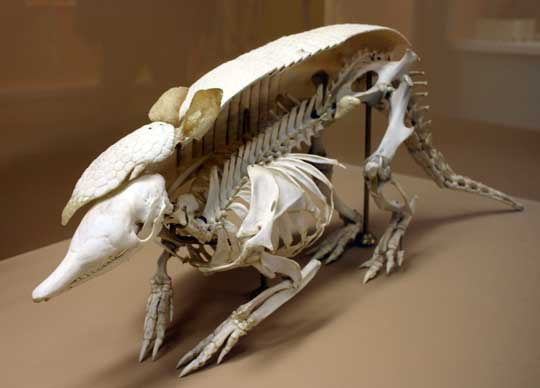
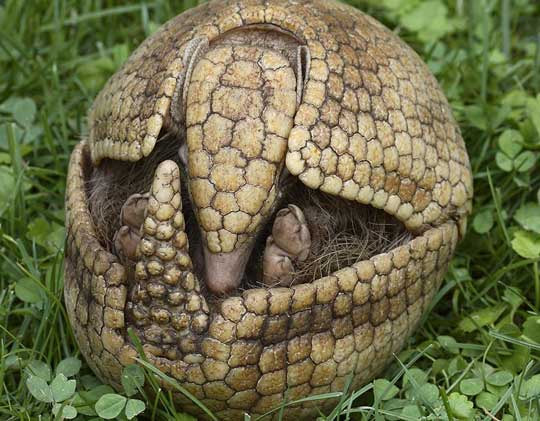
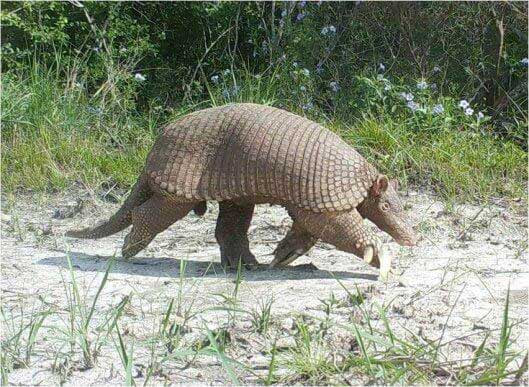


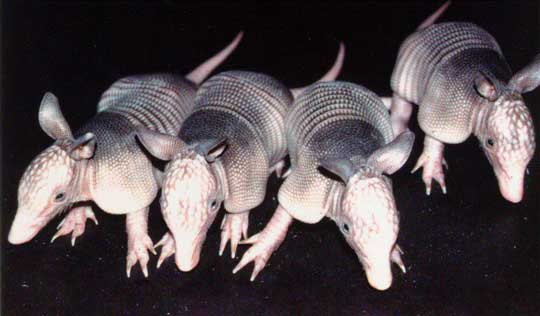
 RSS Feed
RSS Feed